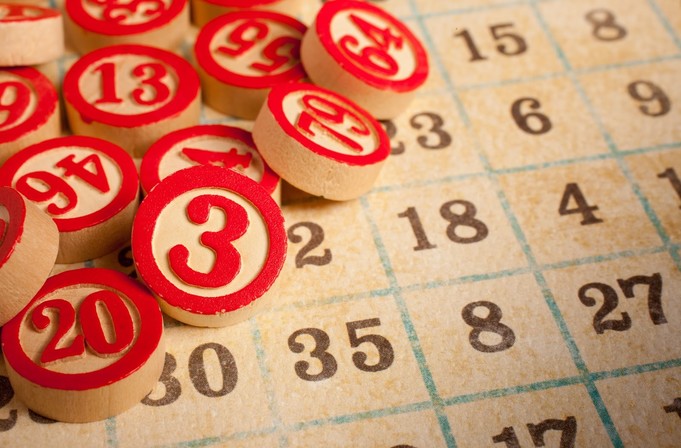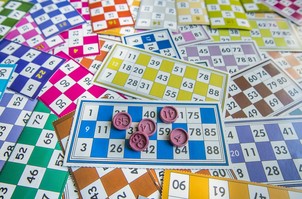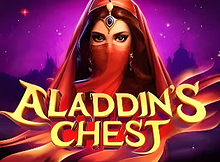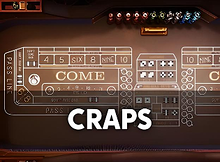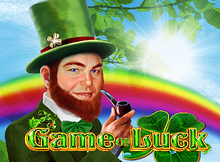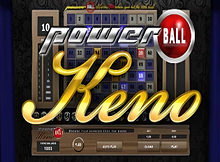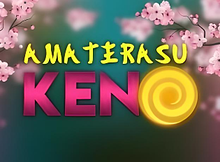1. History
Its original creator remains unknown, but we know it's at least 2,000 years old. It required a mystical kind of knowledge of the "Qianziwen" -- the “Book of a Thousand Characters.”
With a magical kind of popularity, it came from its Chinese home to settle in the United States during the 1840s, and it hasn't left Reno, Nevada since 1933.
What is this phenomenon that has now spread through Asia, South Africa, Australia and both North and South America?
Today it's known by the name "keno." This betting game received this name in America as a combination of the French and Latin words "quine" and "quini" that together referred to the five winning numbers of each player.
Still, keno's original Chinese name was "beige piao," or in some places, "pai-ko p’iao" -- the literal meaning of which is "white pigeon ticket."
Baige Piao came about as a spinoff game to another betting contest involving homing pigeons. Originally, people played Chinese keno by selecting some ideograms, or detailed characters, from the first 80 characters of the "Qianziwen" -- the “Book of a Thousand Characters” mentioned earlier.
Contestants would write their lucky choices down on tickets. The house drew 20 of those 80 numbers, and the person who picked the most winning characters won the most money.
Other sources point to a legend saying that sometime around 200 B.C.E., General Cheung Leung invented this game himself as a way to raise enough money to build the Great Wall of China and pay for China's military to protect them from Northern invaders during the Han Dynasty war.
The General knew that his people would protest any more tax increases, so this betting game was a creative alternative that became a huge success with the people.
In his first version of the game, he may have used up to the first 120 characters of the "Qianziwen" instead of the traditional first 80 characters that we're more familiar with.
Of course, this game has evolved not only into modern keno; it's also the predecessor of bingo and national lotteries worldwide.
When it first came to Reno, players used the names of racing horses instead of numbers because lotteries were illegal.
It wasn't until 1951 that Nevada laws changed to accommodate keno as an official lottery-style game, and keno has been a game of picking lucky numbers ever since.
2. Keno Game Rules
What are the official keno game rules you need to know before playing?
First of all, you've got to understand that while the basic structure is the same internationally, every casino adds their own personal twist to the game to make it a little more interesting and harder to predict.
Always read the casino's copy of their playing rules and ask the staff about their current bonus options to see all your playing choices.
Keno gives you at least 80 options to win. The numbers on your keno card are in eight rows of 10 numbered squares, and the keno card contains numbers 1-80.
You get to pick as many numbers, or "keno spots," as your game allows, which is usually up to 10 and occasionally 20.
You'll mark your favorite numbers down on a ticket before the drawing starts, and you'll also choose how much money you want to bet depending on your casino's current rates.
Then the house will randomly select 20 winning numbers either manually through a ball hopper or digitally through a random-number generator program.
The more numbers you guessed correctly, the more money you will win.
2.1 Different Rules for Keno in Casinos
What makes keno really interesting is the many variations played at each casino: You can also sometimes win additional prizes if your casino rewards you for picking five adjacent winning numbers and other unusual winning-number combinations.
Many casinos also let you play with multiple cards, and if you feel really inspired, then you can even make a mass-bidding across 20 consecutive draws to increase your chances of winning.
The famous "10-spot" keno game lets you even pick 10 numbers and get a small prize even if none of your numbers win.
Some video keno variations include letting you pick just one number out of 40.
In keno "Heads or Tails," you can get up to four times as much money in your winnings by predicting if more numbers will appear in the top half of the 80-number grid or the bottom half of the grid.
You can also guess if exactly 10 numbers will win in both the top and bottom half, known as a perfectly "even" draw. Then you select how much you want to bid per game and how many draws you want to play.
In this type of game, you're typically not selecting specific numbers like in classic keno -- it's all about where the numbers land.
While it's nearly impossible for a keno draw to include all heads or all tails, the probability of 11 to 20 heads is approximately 39.84 percent.
Always double-check your keno ticket before the game begins!
Don't forget to perform a final keno ticket check before the draw begins to make sure that the bets you're placing are exactly what you wanted.
You cannot change your bets in any way after the house makes the draw because you're responsible for looking for any mistakes and understanding your bets before you place them.
3. How To Play Modern Keno
What's more fun about the way you play modern keno in casinos today?
You can play keno privately without any prior experience needed at a digital keno machine amidst all the other slot machines at your favorite casino, and the payouts are often much greater than your initial bets.
You can easily win without using any strategies or having any skills
3.1 Options For Playing Keno in Casinos
In a dedicated keno lounge at top casinos, they use machines like a "hopper" or rotating cage with 80 numbered ping-pong balls inside to choose truly random numbers in every live game.
For those of you who suspect behind-the-scenes tomfoolery in digital casino machines, the keno live ball drawing is your best bet because you can see for yourself that the numbers are "real."
Depending on where you play, you could pick up to 15 different numbers, and the house will draw 20 out of the 80 numbered balls. In these games, you're always responsible for recording the numbers you play.
Every time the house selects 20 numbers, you call those results the current "draw." Therefore, someone who wants to "check draws" is looking up the latest results for their game.
To redeem your winnings, you simply take your winning tickets to the casino cashier. You can even play keno from a restaurant or anywhere else in a casino with the assistance of keno runners.
All you have to do is give your bet to the runner, and they'll deliver it to the head keno writer to register your bet before the drawing.
The copy of your completed bet that you give to the house is known as the "inside ticket." Then the keno runner will bring back your copy of the ticket.
The results of the live keno draws will show up on television monitors throughout the casino so that it's easy for you to see if you've won from anywhere in the casino.
You can win multiple prizes when playing with multiple cards or playing games that offer additional bonus betting.
3.1.1 Keno Machines in Casinos
3.1.2 Keno Lounges in Casinos
3.2.1 Special Offers in the Keno Pay Book
3.1.3 Live Keno Betting Through Keno Runners
3.2.2 Multi-Game Keno Tickets
3.2 Betting Bonus Options in Keno
Keno is exciting because you can win in so many different ways and make small or big bets. In fact, sometimes you can even get some money back if the numbers you bet don't win.
You decide how much risk you're willing to take by looking at the full chart, or keno pay book, that describes all of the betting options at your casino. The pay book is a specific pamphlet with the casino's particular pay tables and playing rules.
Sometimes if your number doesn't win, you can still get some prize money to keep winning if you bet on the right numbers of the casino's pay book.
Every number you bid on has slightly different payouts and bonuses, so you can make a lot of money if you choose wisely. You'll hear some dedicated keno players referring to "multi-game keno tickets."
These bids are a way of betting so that you can make the same selection of numbers in several consecutive draws. It's a variation of "multi-race keno."
The term "race" is just another slang word for a draw; it comes from the nickname that keno games had as "races" back when lotteries were technically illegal.
Back then, people pretended they were betting on horses at the races when they were actually betting on keno random-number draws in secret.
To boost your chances of winning, some people like playing 20-card keno because you can rotate through your personal sets of different numbers to create a new number combination on each of your 20 cards.
You can bet from a penny per card to 25 cents per card in many places.
3.2.3 20-Card Keno
4. Fun Facts About Keno
How many of these 10 fun facts about keno do you know?
- Some will let you play up to 99 consecutive keno draws in one day with drawings every 3.5 minutes!
- Keno first became popular in America through the who played it during their breaks while building the American trans-continental railroad.
- Keno is one of the most popular online-betting games. All of the top five best online casinos feature keno games.
- The website gamingtheodds.com reports that if every person on Earth now played keno during every second of their lifetime, only one person would guess all 20 winning numbers correctly in a Keno draw.
- The aforementioned website also mentions that if you put each one of those tickets next to each other in a line, you'd make a trail so long that it could cross the entire Milky Way galaxy.
- Did you know that competitive keno players in live casino games prefer to pick numbers using crayons rather than pencils or pens? Due to the betting speeds between games, crayons are more reliable because they don't require sharpening or run out of ink at a bad time!
- In recent history, United States citizens aren't legally required to report their keno winnings to the IRS unless they get more than $1,500 in one game.
- Kenospace.com also notes that the most money ever won in a keno game was in the United States in 1997: a total of $364,405.16.
- Computer technician Ron Harris, whose job was checking the computer chips in casinos that generated random numbers, beat keno. Harris was able to replicate the random calculations of the real keno machines to score $100,000 in a New Jersey casino before his arrest.
- Even New Hampshire, one of the most conservative gambling states in the United States, approved keno in their casinos -- even though they haven't approved any other new forms of gambling for the last 50 years.
5. Odds of Winning
What are my odds of winning at keno? Regardless of what kind of keno game you play, the odds for every number in every game are exactly the same.
In true keno, the house cannot favor any particular numbers because the entire game is based on random results. The odds won't be exactly the same for every type of keno game.
For example, your odds of winning can slightly increase if you're playing a live keno ball-drop with replacements.
This way, the house puts each winning number back into the hopper again after calling it out so that the same number could technically win twice in one drawing of 20 numbers.
In general, your best chances are in games where you're trying to get just one number right in a ">"pick one" draw: 25 percent.
The odds decrease down to only six percent of getting two numbers right in a "pick two" game. Your odds continue decreasing with the more picks you make.
Every ball has exactly the same odds as every other ball: a 1 out of 80 chance of winning.
The ultimate keno dream is guessing all 20 numbers drawn correctly. However, your chances of actually winning that top prize are 1 out of 3.5 quintillions -- to be exact: 3,535,316,142,212,180,000.
To clarify, if 5 billion people all played keno one day a week, then only one of them would win in every 13.56 million years.
Currently, no record exists anywhere of anyone ever guessing all 20 numbers in a keno draw correctly. Of course, it could still happen, and what if you were that one person?
Keno led to the creation of national lotteries and bingo, but keno may be the easiest one to win out of these three -- depending on which type of keno you play. In keno, the odds of picking seven numbers right out of 80 possible choices are 1 in 8.826 -- in a game allowing you to pick up to 20 spots maximum.
Your chances of winning the Oz Lotto, where you'd have to get seven numbers out of 45 right, are more than 45 million to 1 -- according to a story by sbs.com.au. In bingo, it would statistically take 41 draws for one player to win; even with 1000 cards, it would still take 10 draws to get a bingo.
6. Mathematical Analysis of Keno's Random-Number Selection
Is there any real math behind keno's random-number selection?
The short answer is, "No." The only real math involved in keno is the statistics of your probability at winning in various types of keno games.
The long answer is that keno's winning numbers must be completely random; therefore, even the computers don't actually select random numbers.
Computers, on their own, cannot perform random actions. Instead, a computer will use a program of randomly generated numbers created by a scientist who's cleverly found a way to record truly random activities in the world and convert them into a long list of numbers with no apparent pattern.
As described by lottery authorities in Maryland during a case study in 2005, something like the book "A Million Random Digits with 100,000 Normal Deviates" becomes the foundation for a computer program that picks keno's lucky numbers.
Any slot machine or online keno game typically uses a random-number generator program to simulate the kind of results that you'd receive in a live keno game.
In this particular Maryland case study of lottery-number selection, they further "randomized" the process by not allowing the computer to directly pick their winning numbers.
Instead, the computer picks new numbers that indicate which set of numbered balls to use and which machine to use the identical sets of equipment they keep.
They also test the machines before the live draw, and a one-minute long drawing could take up to three hours of careful preparation to achieve "true randomness" in the winning numbers.
7. Playing Keno Online
What's it like to play keno online? To find out how much better you could become at this game, try following some of these online keno tips: Since you've got lots of choices about where to play keno online, choose wisely.
Your chances are much better with an online casino that has the highest payout percentages for keno in the industry; research the odds in each place first.
Experiment playing keno for free online with an online keno simulator before you start paying for games. That way you can practice and learn the game before you start making serious betting choices.
You have better odds by betting on less numbers; therefore, experts advise only betting on six numbers maximum. In the end, you're likely to win more after playing multiple games with this strategy.
Computers pick winning keno numbers online with a random-number generator, so you cannot technically predict which numbers will come up.
However, since those who created these random generators did their best to avoid patterns between winning numbers, it stands to reason that by picking numbers that you haven't seen come up in a while, you'll have a slightly better chance of succeeding.
You should definitely experiment with picking consecutive numbers. Many people think that these combinations don't come up very often, but they do appear more than you'd think because of the pretty random nature of the game.
8. Keno Playing Guides
Would you like to learn more about keno? You can view the experiences of other avid keno players and their various strategies online, but no official training exists to become an expert at "beating keno" since it is based entirely on random numbers.
Please keep in mind that anyone advertising tricks to win at keno is presenting their personal theory, and most of these theories aren't based on any reliable facts. Follow all gaming advice at your own risk.
If you'd like to become a licensed keno dealer for a casino in Australia, you'll find lots of information about official training online.
Anyone who's more than 18-years-old can take the required courses, and very few entrance requirements exist for applicants.




